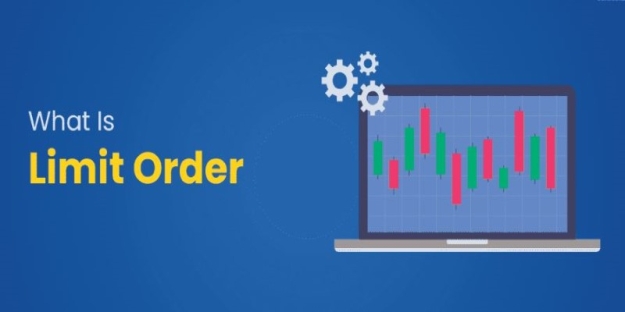
Understanding Market Orders Vs. Limit Orders
Tooba
Ever wondered why your stock trade went through instantly sometimes, while at other times it took a while or didn’t happen at all? The reason often comes down to the type of order you place. In trading, two of the most common order types are market orders and limit orders. Each works differently, and knowing how they function can help you make better decisions when buying or selling stocks.
What Is A Market Order?
A market order is the most straightforward type of trade. When you place one, you’re telling your broker to buy or sell a stock immediately at the best price available. Speed is the main advantage here—you get in or out of the market right away.
Imagine you want to buy 50 shares of a company right now. A market order will grab those shares at the current asking price, whether that’s $50.10 or $50.25. You don’t control the exact price you’ll pay; instead, you rely on whatever the market is offering in that moment.
This type of order is most common when:
- You’re confident about entering or exiting a position right away.
- The stock is highly liquid, meaning a large number of shares are being traded.
- Price changes of a few cents won’t affect your decision.
However, in fast-moving markets, prices can shift in seconds. This means you might buy or sell at a price slightly different from what you saw when you placed the order—a phenomenon called slippage.
What Is A Limit Order?
A limit order is about control rather than speed. When you place a limit order, you set the exact price at which you want to buy or sell. The trade will only happen if the market reaches that price or better.

Let’s say you want to buy shares of a company, but only if the price drops to $48. You set a buy limit order at $48. If the stock reaches that price, your order can be filled. If it stays above $48, nothing happens.
Limit orders are useful when:
- You have a clear target price in mind.
- You want to avoid paying more or selling for less than you planned.
- The stock is volatile, and you prefer waiting for the right price.
The downside? Your order might not be executed at all if the market never hits your target price. This can be frustrating if the price moves in the opposite direction and you miss the trade entirely.
Key Differences Between The Two
While both order types serve the same purpose—buying or selling a stock—the way they work can influence your results.
- Speed vs. Price Control: Market orders prioritize execution speed, while limit orders prioritize getting your chosen price.
- Execution Certainty: A market order almost always executes right away. A limit order may not execute at all.
- Slippage Risk: Market orders can suffer from slippage during volatile moments. Limit orders avoid this but risk missing the trade.
When To Use A Market Order
Market orders are best when execution is more important than the exact price.
For example, if news just broke about a company you’ve been watching and you want to buy shares immediately before the price jumps higher, a market order can secure your position. Similarly, if you need to sell quickly to prevent further losses, a market order ensures speed.
They also work well for large, actively traded stocks where bid-ask spreads are tight, meaning the difference between the buying and selling price is small.
When To Use A Limit Order
Limit orders shine when patience pays off.
Suppose you’ve done your analysis and believe a stock is worth buying only if it falls to a specific price that offers value. A limit order lets you set that target and wait.
They can also be handy when selling. Let’s say you own shares trading at $75 and believe they could hit $78 in the coming weeks. A sell limit order at $78 means you don’t have to watch the market constantly—if the price hits that level, your order can be filled.
Market Volatility And Order Choice
In calm markets, the difference between using a market order and a limit order may be small. But in volatile markets, the choice can have a bigger impact.
During periods of rapid price movement, market orders can execute at prices far from your expectations. For instance, a stock listed at $40 could be bought at $40.50 or higher if demand surges in seconds. Limit orders, in this case, can protect you from overpaying—but they might leave you without any shares if prices jump quickly and never come back.
The Role Of Liquidity
Liquidity refers to how easily a stock can be bought or sold without causing major price changes.

Highly liquid stocks—those with many buyers and sellers—make market orders safer because prices won’t move much between the time you place the order and when it’s executed. Low-liquidity stocks, however, may have larger bid-ask spreads, making market orders riskier. Limit orders can be safer here, ensuring you don’t overpay or undersell.
Combining Market And Limit Orders
Some traders use both types in different situations. You might place a market order for a portion of your desired shares to secure an immediate position, and a limit order for the rest at a better price. This strategy gives you both quick entry and the possibility of a more favorable cost.
Others use stop-limit or stop-market orders, which combine features of both. For example, a stop-market order triggers a market order once a set price is reached. A stop-limit order, on the other hand, triggers a limit order when that price is hit, offering more control but less certainty.
Mistakes To Avoid
- Using Market Orders in Thinly Traded Stocks: This can lead to big price differences between what you expect and what you get.
- Setting Unrealistic Limit Prices: If your price is too far from the current market, the order may never fill.
- Ignoring Fees and Commissions: While most brokers offer commission-free trades, certain order types or executions may still have small costs.
Choosing The Right Order For Your Goals
Choosing between a market order and a limit order depends on whether you value speed or price control. A market order works best if you need quick execution at the current price. A limit order suits those willing to wait for a specific price. Knowing how each functions allows you to trade with more confidence, manage risk effectively, and ensure your decisions match your overall investment approach.




